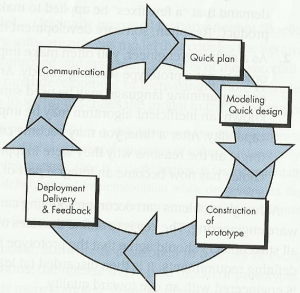This portfolio is a result of following certain process methodologies. As with more traditional approach, the team roles were clearly defined and most of the tasks were allocated at the start of the project. A project plan with milestones was also prepared.
The processes of developing the portfolio and designing our social network have had several elements of prototyping, one of the popular prescriptive (traditional) methods:
- Going through multiple iterations in order to provide finished work
- Discovering new stakeholder’s requirements with each iteration
- Response to feedback from our mentor, who acted effectively as our Client
However, we have also incorporated some strong agile components to it, such as:
- Frequent and regular meetings as a group (on weekly basis) plus extra meetings in subgroups (e.g. graphic designers) as appropriate but also informal Facebook conversations
- Regular meetings with our mentor
- Spare meeting times used for brainstorming and free circulation of ideas
- Balancing workload, requirements and product features in order to meet the deadlines
- Role flexibility: while everyone had their role assigned, team members were able to support each other in areas outside their core responsibilities
References
- Pressman, R.S., 2010. Software Engineering: A Practitioner’s Approach 7th ed., London: McGraw-Hill.

